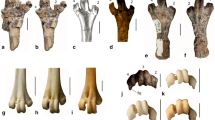Abstract
Gibbons are small and arboreal apes restricted to southeastern tropical and southern subtropical regions in Asia. They are distributed from Assam in the northwest, eastward to south China and Vietnam, south through the Malay Peninsula to Sumatra, Borneo, Java, and the Mentawai Islands. Twenty-two genetically distinct populations of gibbons are generally recognized.
Gibbons were once widely distributed in China; however, they are now primarily restricted to southern and southwestern Yunnan and Hainan Island. Their widest distribution and greatest species diversity is in Yunnan Province. Gibbons are rare in China and are now listed as a first class endangered species.
Four gibbon species inhabit Yunnan Province in southern China. They areH. hoolock, H. lar, H. leucogenys, andH. concolor. There are three subspecies ofH. leucogenys: H. l. leucogenys, H. l. siki, andH. l. gabriellae. OnlyH. l. leucogenys inhabits China. Four subspecies ofH. concolor inhabit China. These areH. c. concolor, H. c. jingdongensis, H. c. furvogaster, andH. c. hainanus. The first three subspecies inhabit Yunnan andH. c. hainanus is found only on Hainan Island.H. lar yunnanensis is the subspecies ofH. lar in southern China.H. hoolock leucogenys is the subspecies ofH. hoolock in southern China.H. concolor jingdongensis, H. concolor furvogaster, andH. lar yunnanensis are all newly proposed subspecies byMa andWang (1986).
The data on southern China gibbons presented here is based on an analysis of the skeletons and skins of 49 specimens held at the Kunming Institute of Zoology, Kunming, Yunnan.
Similar content being viewed by others
References
Allen, G., 1938.The Mammals of China and Mongolia, Part 1. American Museum of Natural History, New York.
Dao, V. T., 1983. On the North Indochinese gibbons (Hylobates concolor) (Primates, Hylobatidae) in North Vietnam.J. Human Evol., 12: 367–372.
Delacour, J., 1933. On the Indochinese gibbons (Hylobates concolor).J. Mammal., 14: 71–73.
, 1951. La systématique des gibbons Indochinois.Mammalia, 15: 118–123.
Ellerman, J. &T. Morrison-Scott, 1951.Checklist of Palaearctic and Indian Mammals. British Museum of Natural History, London.
Elliot, D., 1912.A Review of the Primates, Vol. 1. American Museum of Natural History, New York.
Fooden, J., 1969. Color-phase in gibbons.Evolution, 23: 245–269.
Gao Y-T., Wen H. R., &He Y. H., 1981. The change in historical distribution of Chinese gibbons (Hylobates).Zool. Res., 2: 1–8. (in Mandarin)
Groves, C., 1967. Geographic variation in the hoolock or white-browed gibbon (Hylobates hoolock Harlan 1834).Folia Primatol., 7: 276–283.
----, 1968. A new subspecies of white-handed gibbon from Northern Thailand (Hylobates carpenteri new subspecies).Proc. Biol. Soc., Washington, 625–628.
, 1972. Systematics and phylogeny of gibbons. In:Gibbon and Siamang, Vol. 1,D. Rumbaugh (ed.), S. Karger, Basel, pp. 1–89.
, 1984. A new look at the taxonomy and phylogeny of the gibbons. In:The Lesser Apes, Evolutionary and Behavioral Biology,H. Preuschoft,D. Chivers,N. Creel, &W. Brockelman (eds.), S. Karger, Basel, pp. 542–561.
Gulik, R. van, 1967.The Gibbon in China. Brill, Leiden.
Haimoff, E., D. Chivers, S. Gittins, &A. Whitten, 1982. A phylogeny of gibbons (Hylobates spp.) based on morphological and behavioural characters.Folia Primatol., 39: 213–237.
, &, 1984. A phylogeny and classification of gibbons based on morphology and ethology. In:The Lesser Apes, Evolutionary and Behavioural Biology,H. Preuschoft,D. Chivers,N. Creel, &W. Brockelman (eds.), S. Karger, Basel, pp. 613–631.
Harlan, R., 1826. Description of a hermaphrodite orang outang.J. Nat. Sci., Philadelphia, 5: 229–236.
Kao Y., Lu C., Chang C., &Wang S., 1962. Mammals of the Hsi-Bhuan-Pan-Na area in southern Yunnan.Acta Zool. Sinica, 14: 180–189. (in Mandarin)
Li Z. &Lin Z., 1983. Classification and distribution of living Primates in Yunnan, China.Zool. Res., 4: 11–120. (in Mandarin)
Liu R., Shi R., &Chen Y., 1987. A study on the chromosomes of the white-browed gibbon (Hylobates hoolock leuconegys).Acta Theriol. Sinica, 7: 1–7. (in Mandarin)
Liu X., 1980. The effect of climate on the geographic distribution of apes and monkeys.J. Zool., 3: 53–56. (in Mandarin)
Ma S. &Wang Y., 1986. The taxonomy and distribution of gibbons in southern China and its adjacent regions-with a description of three new subspecies.Zool. Res., 7: 393–409. (in Mandarin)
Marks, J., 1987. Social and ecological aspects of primate cytogenetics. In:The Evolution of Human Behavior: Primate Models,W. Kinzey (ed.), State Univ. of New York Press, Albany, pp. 139–150.
Miller, G., 1933. The classification of gibbons.J. Mammal., 158–159.
Ogilby, W., 1840. On a new species of gibbon (Hylobates leucogenys).Proc. Zool. Soc., London, 1: 20–21.
Osgood, W., 1932. Mammals of theKelley-Roosevelts andDelacour Asiatic expeditions.Field Mus. Nat. Hist., 18: 199–201.
Pocock, R., 1905. Observations on a female specimen of the Hainan gibbon (Hylobates hainanus), now living in the Society' gardens.Proc. Zool. Soc., London, 2: 169–180.
Prouty, L., P. Buchanan, W. Pollitzer, &A. Mootnick, 1983a. Taxonomic noteBunopithecus, a genus-level taxon for the hoolock gibbon (Hylobates hoolock).Amer. J. Primatol., 5: 83–87.
, &, 1983b. A presumptive new hylobatid subgenus with 38 chromosomes.Cell Genetics, 35: 1414–1420.
Quan G., Wang S., &Zhang R., 1981a. Classification and distribution of primates in China.Chinese Wildlife, 3: 7–14. (in Mandarin)
, &, 1981b. Status and preservation of primates in China.Acta Theriol. Sinica, 1: 99–103. (in Mandarin)
Schultz, A., 1933. Observations on the growth, classification and evolutionary specializations of gibbons and siamangs.Human Biol., 5: 212–255; 385–428.
Tan B., 1981. Apes and monkeys of China.Nature Quarterly, 3: 26–29. (in Mandarin)
---- &F. Poirier, in press. Up-dated status on some of China's primates.Prim. Conserv.
Thomas, O., 1892. Notes on the gibbons of the island of Hainan (Hylobates hainanus sp. n.).Annals Mag. Nat. Hist., 6: 145–146.
Wang Y. & Ma S., 1987. Mammals of the southwest part of China and their natural preservation. Paper read at International Conference of Wildlife Conservation, Beijing.
Xu L., Liu Z., &Yu S., 1983.The Birds and Mammals of Hainan Island. Scientific Press, Beijing. (in Mandarin)
Zhang Y-Z., Wang S., &Quan G.-Q., 1981. On the geographical distribution of primates in China.J. Human Evol., 10: 215–226.
Author information
Authors and Affiliations
About this article
Cite this article
Ma, S., Wang, Y. & Poirier, F.E. Taxonomy, distribution, and status of gibbons (Hylobates) in Southern China and adjacent areas. Primates 29, 277–286 (1988). https://doi.org/10.1007/BF02381129
Issue Date:
DOI: https://doi.org/10.1007/BF02381129




